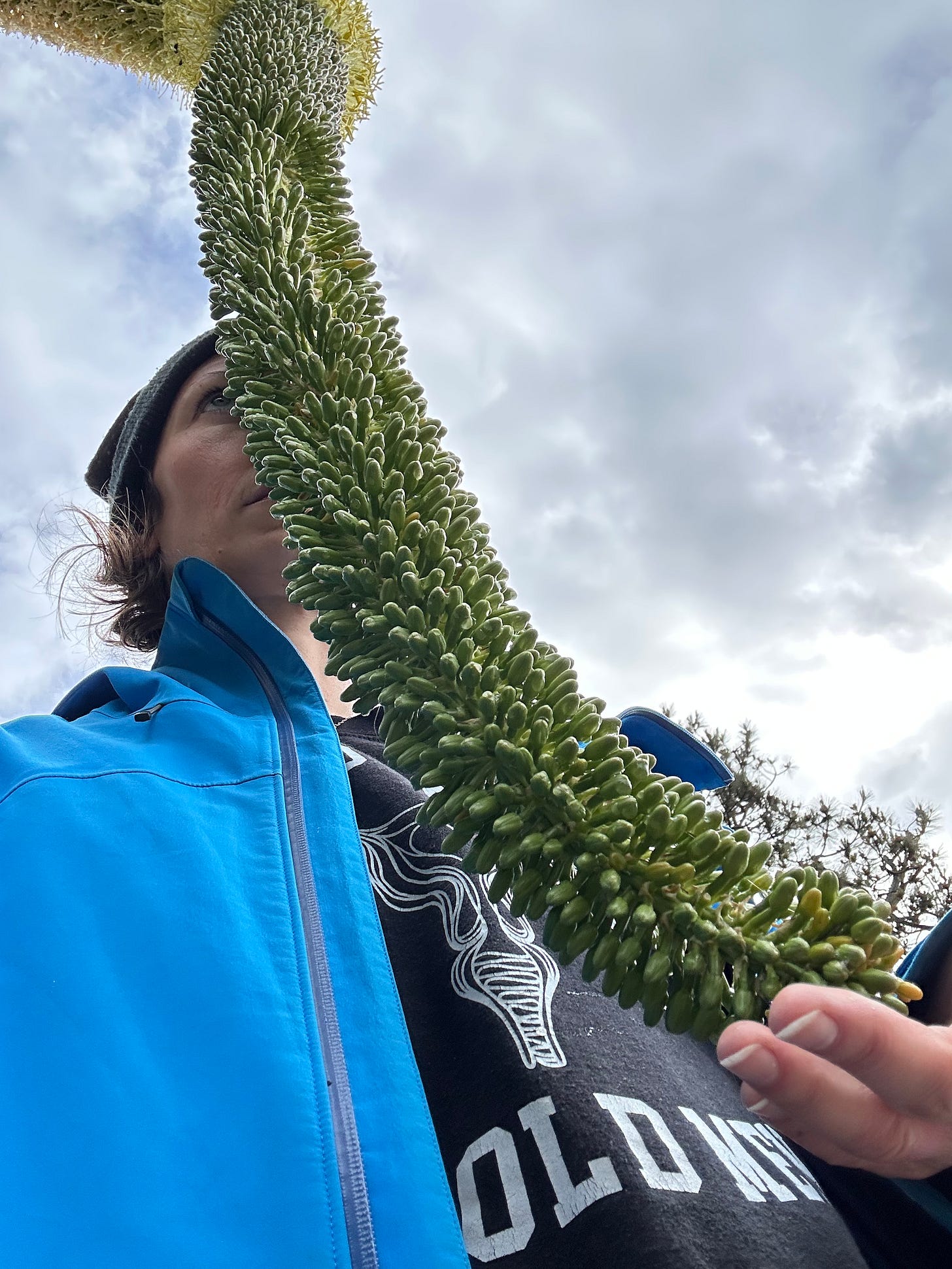Hello friends,
How are we? My series on Buddhism continues next week (part 1.a (of how many? We don’t know!) is here) but I had to address the elephant in the room: the intense bigness of this January.
January’s not longer than, say, March, May, July, August, or… oh I don’t know, October and December?! BUT also, it really, really is. If you’ve lived through a January, any January but especially this one, you know it’s true.
January shows off just how much it can hold. It contains multitudes and will not let us forget it. Not one, but two new years (Gregorian and Lunar); Great fires, cease, wild, and otherwise. Capricorn *and* Aquarius. Seven planets visible in the night sky at once. Endings and beginnings of lives and eras. Mid-air collisions. Fresh grief and fresh new. Good grief.
Damn, January! Ooooohkay, Jan, we get it ;) But still January trudges on. She’s is a loooong wait and a gale force. Challenging us to keep going; to have faith and patience; to get up for another day. To stay, stay, stay. It’s humbling because even when we don’t want to, Jan cajoles us, ‘here, take just a little bit more.’ And we do have the capacity to hold more, in part because we don’t have the choice not to. And then…it’s over. Today is its swan song. Tomorrow, January 2025 is gone forever.
Q1 is death bloom season in LA. This year, more than ever, that’s been apparent to me. Agaves are everywhere — not to brag — and around this time they bloom, and that is the florid start to a morbid end.
Agaves, like a collection of other plants and animals, are semelparous. This means they pour all their time and energy into reproducing once and the act of doing so is so utterly depleting they die soon there after. While this may be figuratively what feels like happens when during the immediate postpartum and after you have a human baby, it is not literal. For agaves and other semelparous beings, it’s literal.
Bada bing bada boom.
All agave blooms are death blooms. But they have full lives before that, often living decades before a bloom. So if you do catch a death bloom, you’re seeing the agave’s big finish after a hearty life of surviving and thriving. Special to witness; gotta give it up for the agave. They give it all in the final months, so the blooms are fabulous, formidable, and even theatrical.
The blooms can grow along a hearty stalk up to 50 feet! I was once sitting on a third floor balcony as I observed a hummingbird feeding on the flowers of an agave bloom that had reached that high. Not long after, I saw that a gardener had hacked off that audacious stalk and eventually the agave passed away.
The reality is death bloom season is every season, whether you’re in LA or not. Over the last few months, my family and I became quite fond with one particular agave and her bloom. It was an agave attenuata, different than this one above (agave americana) also known as a swan’s neck agave. These blooms are absolutely ridiculous four to five foot-tall Seuss-like S-curves.
This particular agave I am telling you about was rooted in an elevated landscape about six feet above the sidewalk where we walked twice a day every day, at least. This enabled a unique appreciation of her growing bloom from below. Thus her swan’s neck gracefully stretched upwards and then dangled slopingly into the path of passersby. Whether they wanted to consider the agave, she was not to be missed.
Over time we couldn’t help but chart her growth, which was also to follow the plot line of her imminent death. We were her number one fan, witnesses to her life, and doulas to her death. The flowers on the trunk of the bloom had already begun to wither and die while the flowers on the tip of the bloom had not yet even opened. And in-between, bees and humming birds signal the perfect ripeness of life. And still the bloom kept growing. A natural feat of death and dazzle.
In the bloom’s early days, I’d make my small son laugh by running and jumping up to give it a little high five. I’d lift him up like a little Simba to try and high five it himself. Eventually it stretched further out and down into our path and we could high five it with feet planted. Then it grew even longer and we’d stop and shake it’s hand, “pleased to meet ya!” We are teaching him early the importance of a friendly but assertive handshake, and the bloom was the perfect prop.
On the last day I met the bloom, it was finally raining in LA. Too little too late for everyone who’s lives who’d already burned, but still a blessing to drink up. The bloom swung low, down past my waist. She was laden with the weight of her length and still heavy with flower buds not yet opened.
Then yesterday, she was gone. Heavy and full like a January and then all of a sudden no more. Severed at the stump, just some plant matter and a memory. I felt a twinge of sadness. I mean I get it, that’s the direction she was going (we are all going). And I do support death with dignity. But a loss is a loss and it’s always the right time to take a moment or it. “Pleased to meet ya is gone!” I stammered to my son. He looked confused, he gets it. Our walk was eerily unobstructed.
Do agaves know they are dying as they are blooming? What does it feel like in a body that has parts already withered and dead alongside parts full of nectar, and also those not even bloomed yet? We can ask ourselves just this.
The reality is that every life led is a death bloom, because we are not guaranteed to do it all again regardless of what you believe.
The term ‘swan song’ comes from an old myth that swans don’t make noise during their life, but utter a sound just before they die. We have come to understand the term to mean our legacy, what we’ll be remembered for, or our final curtain call. You can also consider your whole life your swan song — something beautiful and singular that you won’t get to do again.
What’s not a myth is how long swans’ necks are: 24-25 vertebrae. Humans have just seven and that already feels like more than I can keep up with. My neck is constantly cricky.
Swans have such long necks so they can dive deep to get some delicious agae and other green stuff they eat. And we have necks that are equally appropriate for our purposes, which is to be able to look around and take it all in.
Happy Lunar New Year of the snake, offering us visions of renewal, shedding, and rebirth. Talk about a long neck! Snakes have anywhere from 200 to 400 vertebrae and we can imagine that most of that is neck, with at least a little tail at the end.
Happy last day of January. January, you semelparous beast - leaving it all on the field, giving us everything you had which was a lot. And now you’re expiring. Tomorrow is February, which will bring new horrors and delights. Big love to the death blooms which give us grandeur in demise and also a laugh. We got this.
Death Bloom Season in LA
All the blooming agaves are dying.
The irony of the flash is that it signals the fade.
But while we’re all here we’ll have a fucking blast.
The nectar is flowing and the bees are going nuts.
They’re slaying this death thing — big, bad stalks crowded with buds luscious.
See me. Witness me. Love me as I am.
The higher the bloom, the closer to grave.
Time is a gift.
To witness a life well-lived: a big bloom and a big finish.
What a gift.







